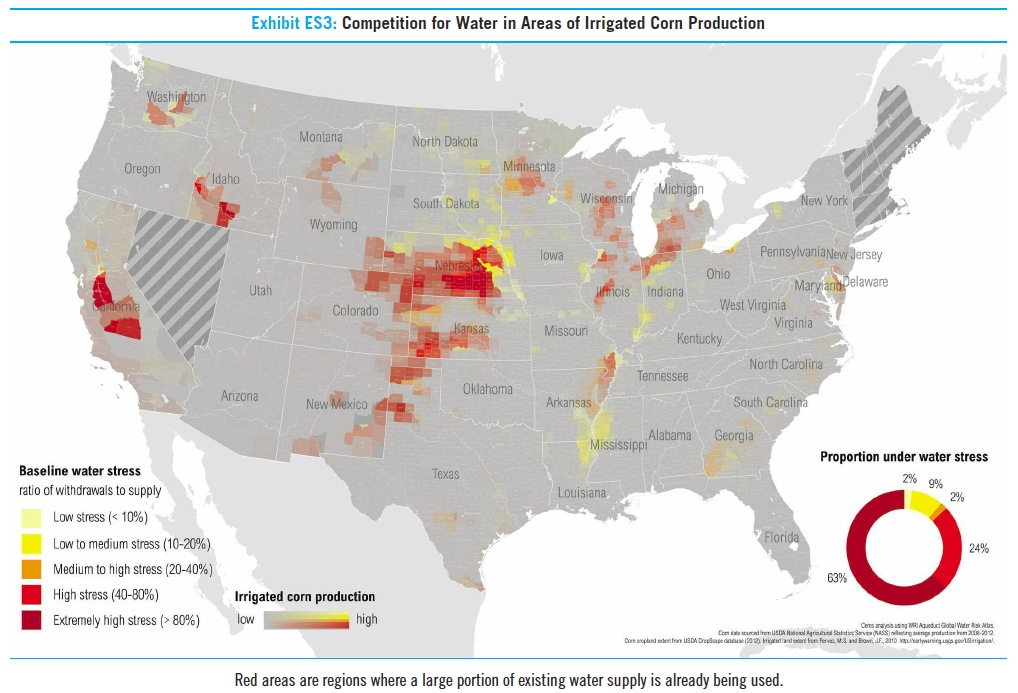CERES
Water & Climate Risks Facing U.S. Corn Production: How Companies & Investors Can Cultivate Sustainability
Executive Summary
U.S. corn farmers are among the most productive and technologically advanced in the world, generating a record harvest of nearly 14 billion bushels in 2013—enough corn to fill a freight train longer than the circumference of the Earth. This production supports a mammoth agricultural sector comprised not just of farmers, but also major food, feed and energy companies that have an enormous stake in the long-term productivity and resilience of American agriculture. However, in the face of this bounty, three major threats to U.S. corn production loom: climate change, unsustainable water use and inefficient and damaging fertilizer practices.
Recent extreme weather events such as the devastating Midwest drought of 2012 helped drive record corn prices ($8/bushel). This provided a taste of what is predicted to become the new normal in many parts of the Corn Belt thanks to climate change—a point powerfully reinforced by the latest National Climate Assessment.
Growing irrigation demand for corn production, alongside unchecked withdrawals of groundwater from stressed water sources—in particular, the High Plains aquifer that spans eight Great Plains states and California’s overextended Central Valley aquifer—create additional risks for the $65 billion a year corn industry, which has nearly doubled in size over the past two decades. Economically wasteful and unregulated pollution from fertilizers running off cornfields into waterways—a key contributor to a Connecticut-sized hypoxic “dead zone” in the Gulf of Mexico—is still another area of risk.
Given the scale of the challenges facing U.S. corn production and the key industries that depend on it, investors need to understand how companies in the grain processing, food, beverage, livestock, ethanol, grocery and restaurant sectors are addressing these risks in their supply chains. Already, there is growing demand from food retailers and manufacturers for more sustainable products and new supply chain initiatives that encourage more resilient and sustainable agricultural production. But these efforts have not been moving at the pace and scale necessary to address the risks at hand.
This report provides new data and interactive maps on the risks facing U.S. corn production, as well as detailed recommendations for how corn-buying companies and their investors can catalyze more sustainable agricultural practices that will reduce these risks, preserve and enhance yields, and protect precious water resources.
View full version (Ceres.org): Water & Climate Risks Facing U.S. Corn Production
About Ceres
www.ceres.org
“Ceres (pronounced “series”) is a national network of investors, environmental organizations and other public interest groups working with companies and investors to address sustainability challenges such as global climate change.”
Tags: agriculture, Ceres, corn







 RSS Feed
RSS Feed